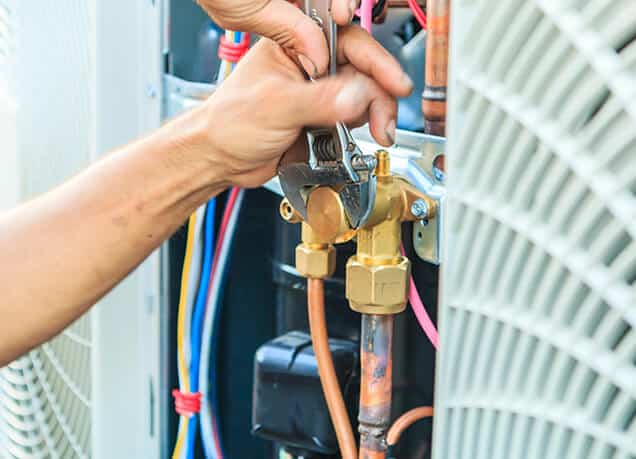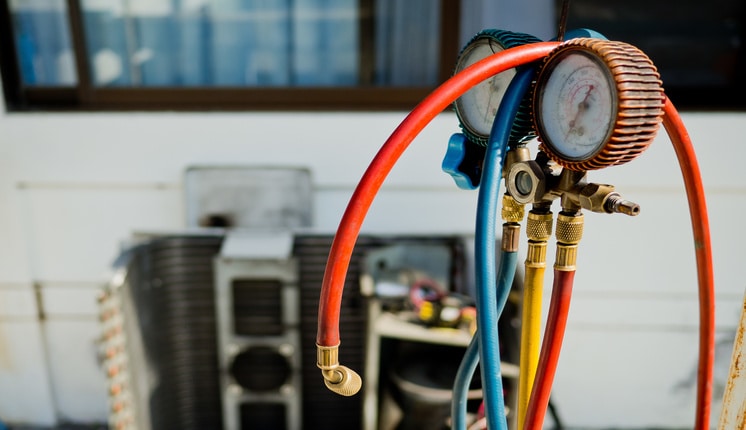Maintaining a comfortable indoor environment is crucial for any commercial space. When your HVAC system malfunctions, it can disrupt operations and affect productivity. However, hiring professional repair services can be costly and time-consuming. In this comprehensive guide, we’ll delve deep into the world of commercial HVAC repair, exploring step-by-step instructions, troubleshooting techniques, preventive maintenance tips, and more to empower you to tackle HVAC issues with confidence and expertise.
Understanding the HVAC System

Before embarking on any repair endeavors, it’s essential to develop a comprehensive understanding of the components that comprise your commercial HVAC system. Familiarizing yourself with the inner workings of the system will not only facilitate troubleshooting but also enable you to identify potential issues more effectively. Key components include the compressor, condenser, evaporator, thermostat, refrigerant lines, air ducts, and filters. Understanding how these elements interact and contribute to the overall functionality of the system is paramount in diagnosing and resolving problems.
Identifying Common Problems
Commercial HVAC systems are prone to a myriad of issues that can compromise their performance and efficiency. Some of the most prevalent problems include inadequate heating or cooling, irregular temperature fluctuations, poor airflow, unusual noises, and system malfunctions. By being cognizant of these common issues, you can swiftly identify symptoms and initiate timely repairs, thereby minimizing downtime and optimizing comfort levels within your commercial premises.
Gathering the Necessary Tools
Equipping yourself with the appropriate tools is essential for executing HVAC repairs effectively and safely. A well-stocked toolkit should include a variety of hand tools such as wrenches, screwdrivers, pliers, wire cutters, and voltage testers. Additionally, specialized tools may be required for certain tasks, such as refrigerant gauges, vacuum pumps, leak detectors, and pipe cutters. Investing in high-quality tools will not only enhance the efficiency of your repair endeavors but also ensure precision and accuracy in your workmanship.
Troubleshooting and Diagnosis

A systematic approach to troubleshooting is imperative for identifying the root cause of HVAC problems and formulating targeted solutions. Begin by conducting a thorough visual inspection of the system, paying close attention to any visible signs of damage, wear, or corrosion. Next, utilize diagnostic tools such as multimeters and pressure gauges to assess the performance of critical components and ascertain any deviations from optimal operating parameters. By methodically analyzing each subsystem and isolating potential sources of malfunction, you can streamline the repair process and expedite restoration efforts.
Executing Repairs Safely
Safety should always be prioritized when working on HVAC systems, as they encompass various electrical, mechanical, and refrigeration components that pose inherent risks if mishandled. Before commencing any repair activities, ensure that the system is powered off and safely disconnected from its power source to prevent accidental shocks or injuries. Additionally, wear appropriate personal protective equipment (PPE), including gloves, safety goggles, and respirators, to shield yourself from potential hazards such as electrical arcs, chemical exposure, and airborne contaminants. If you’re uncertain about the proper procedures or safety precautions, don’t hesitate to consult instructional manuals, online resources, or seek guidance from experienced professionals.
Replacing Faulty Components
In many instances, resolving HVAC issues necessitates the replacement of defective or worn-out components that are beyond repair. Common components that may require replacement include capacitors, contactors, relays, motors, valves, sensors, and thermostats. When selecting replacement parts, ensure compatibility with your specific make and model of HVAC equipment to prevent compatibility issues and ensure optimal performance. Additionally, adhere to manufacturer guidelines and industry best practices when installing new components, paying careful attention to torque specifications, electrical connections, and refrigerant handling procedures.
Testing and Calibration
Once repairs have been completed and new components installed, thorough testing and calibration are essential to verify the effectiveness and reliability of the HVAC system. Begin by conducting functional tests to assess the system’s performance under normal operating conditions, including startup sequences, temperature regulation, airflow distribution, and overall system responsiveness. Additionally, utilize diagnostic tools and instruments to measure key parameters such as refrigerant pressure, electrical voltage, and temperature differentials, comparing observed values against specified tolerances and benchmarks. By meticulously testing and calibrating the system, you can identify any remaining issues or discrepancies and address them promptly, ensuring optimal functionality and efficiency.
Preventive Maintenance
In addition to reactive repairs, proactive preventive maintenance plays a pivotal role in preserving the longevity and efficiency of commercial HVAC systems. Establishing a comprehensive maintenance regimen involves a combination of routine tasks such as filter replacement, coil cleaning, lubrication, belt tensioning, refrigerant replenishment, and system inspections. By adhering to a structured maintenance schedule, you can preemptively identify and mitigate potential issues before they escalate into costly repairs or system failures. Furthermore, regular maintenance enhances energy efficiency, improves indoor air quality, prolongs equipment lifespan, and reduces operational costs, making it a worthwhile investment for commercial property owners and facility managers.

Conclusion
Successfully repairing and maintaining a commercial HVAC system requires a blend of technical expertise, practical skills, and systematic approaches. By understanding the underlying principles of HVAC operation, familiarizing yourself with common problems and repair techniques, and adhering to safety protocols and maintenance best practices, you can confidently address issues as they arise and optimize the performance and reliability of your HVAC infrastructure. Whether you’re a seasoned HVAC technician or a facility manager seeking to take a hands-on approach to maintenance and repair, the insights and guidelines presented in this guide will empower you to navigate the complexities of commercial HVAC systems with proficiency and assurance.






GIPHY App Key not set. Please check settings